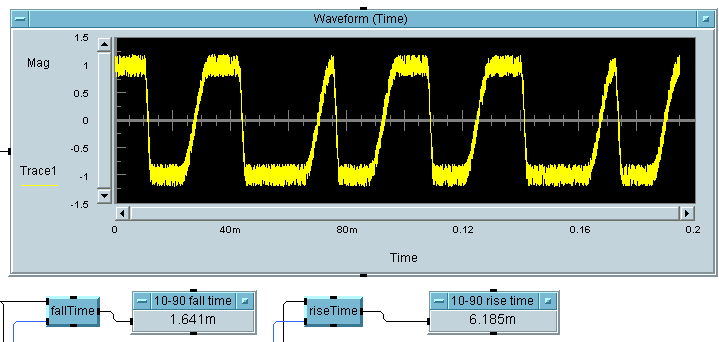

Determines the rise time of an arbitrary signal.


One common parameter for digital signals (pulses, square waves, etc.) is rise time. Rise time is the transition time from a lower extreme to an upper extreme. This is commonly defined as 10-90 time (time from 10% of the full transition to 90%) or 20-80 rise time. This function takes an arbitrary signal and analyzes it to determine the average rise time. The input margin is used to define both the upper and lower transition limits. Hence margin=10 is the same as 10-90 rise time.
menu: veeos ==> Signal Processing ==> riseTime
library: sigLib

This function is very general in nature so any signal may be used. It finds all applicable transitions in the given signal and then averages them to give an estimate of the signal's rise time. Note that it does not treat any particular rise time as more important than any other so if you are looking for transitions in very noisy signals you may want to examine the signal differently. Since margin can be specified you are free to define rise as you like.
VEE 7.0+, all platforms
dutyCycle, fallTime, frequency, period